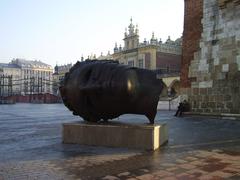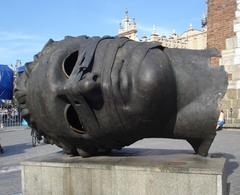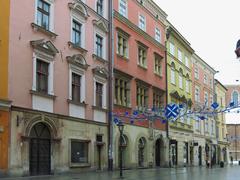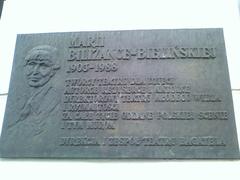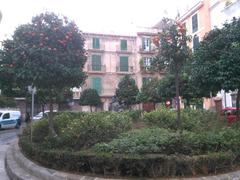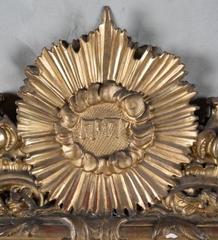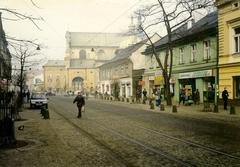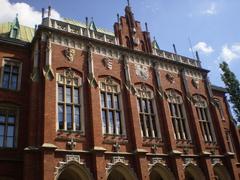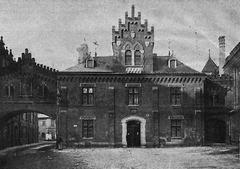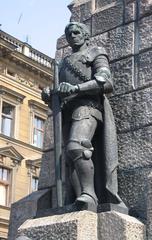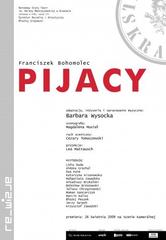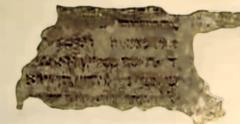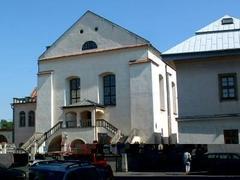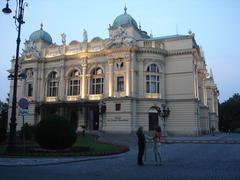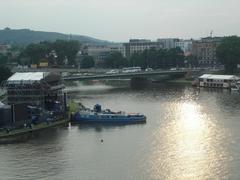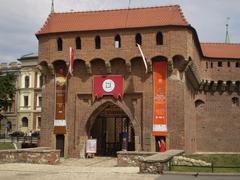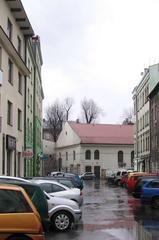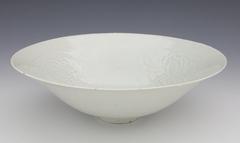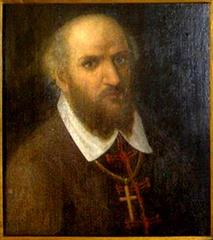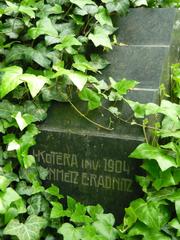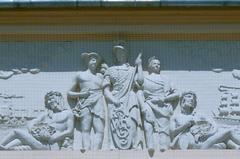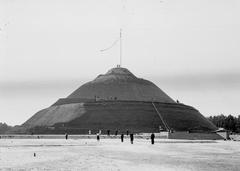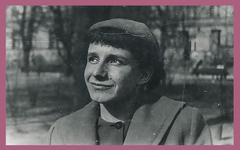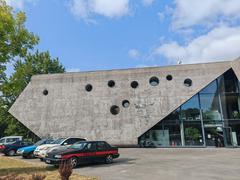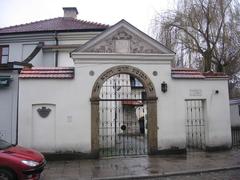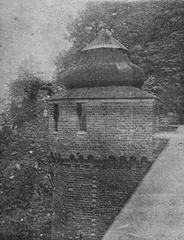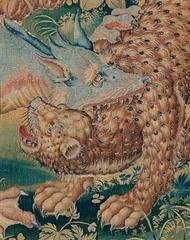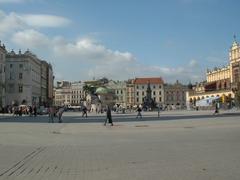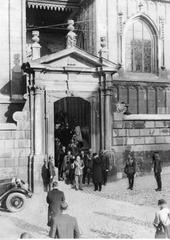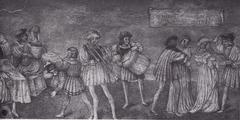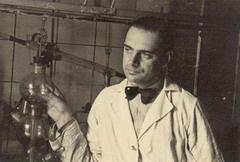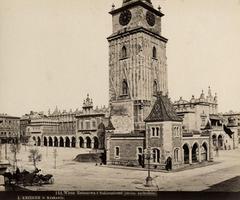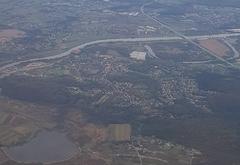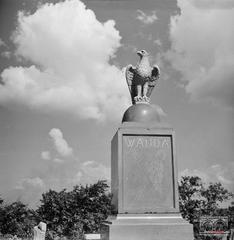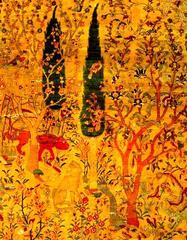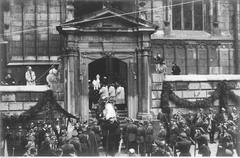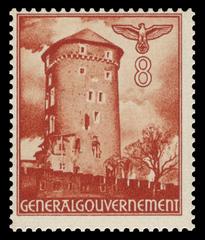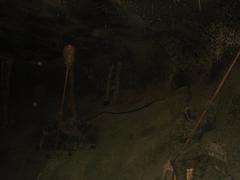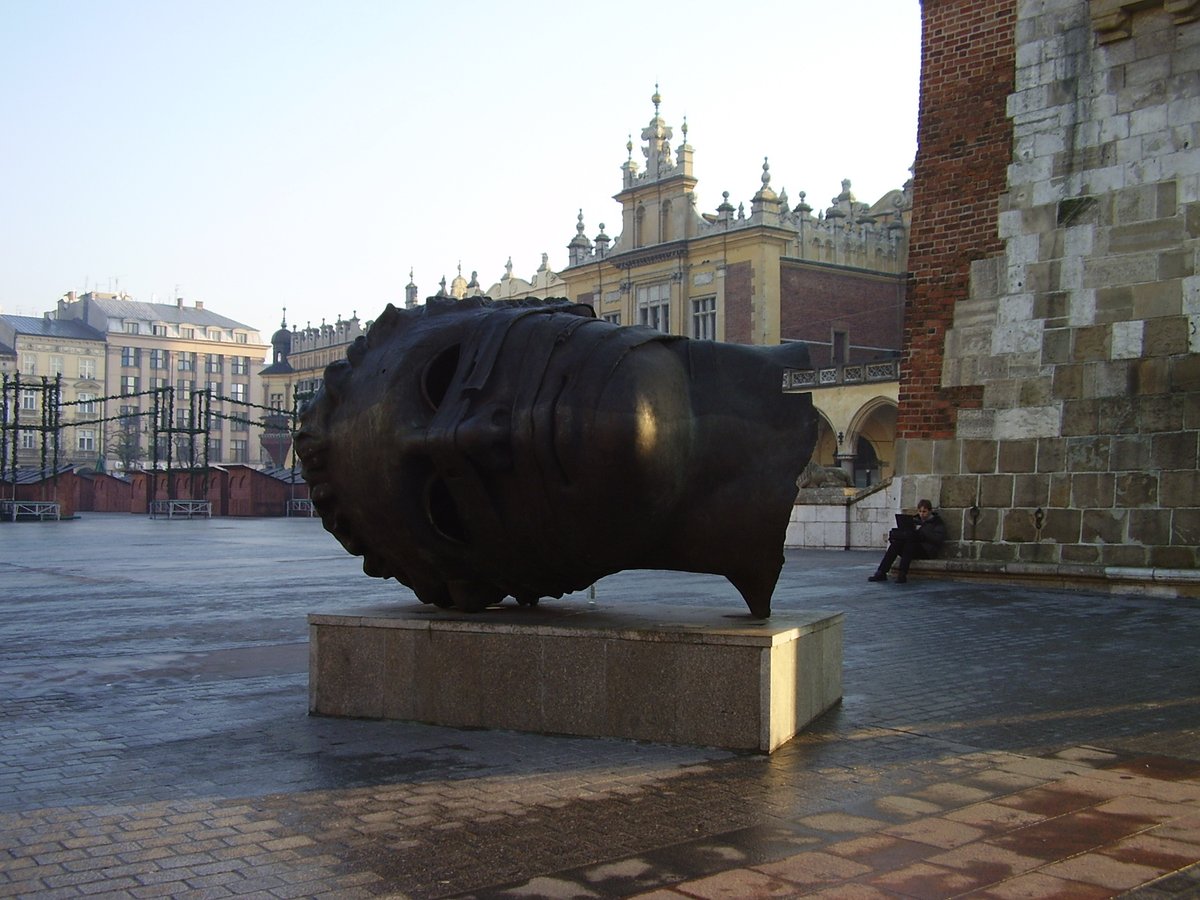
Visiting Eros Bendato: Hours, Tickets, and Historical Insights
Date: 19/07/2024
Introduction
Eros Bendato, often referred to as the ‘Head of Eros,’ is a compelling bronze sculpture located in the heart of Kraków, Poland. Created by the renowned Polish artist Igor Mitoraj in 1999, this masterpiece blends classical themes with modern sensibilities. Installed in 2003, it now stands prominently in Kraków’s Main Market Square (Rynek Główny), which is one of the largest medieval town squares in Europe and a UNESCO World Heritage Site (UNESCO). The sculpture has quickly become an integral part of Kraków’s cultural and historical landscape, attracting both locals and tourists alike. Its fragmented and bandaged depiction of Eros, the Greek god of love, invites deep reflection and conversation about the nature of love, human emotion, and resilience, mirroring Poland’s own tumultuous history. This guide aims to provide comprehensive information for visitors, including the historical significance, visiting hours, ticket details, and nearby attractions, ensuring a memorable and enlightening experience at this iconic landmark.
Table of Contents
- Introduction
- Origins and Creation
- Installation in Kraków
- Symbolism and Interpretation
- Cultural Impact
- Visitor Information
- Preservation and Maintenance
- Public Reception and Criticism
- Influence on Contemporary Art
- Educational and Cultural Programs
- FAQ
- Conclusion
Origins and Creation
Eros Bendato was crafted in 1999 and is one of Igor Mitoraj’s most famous pieces. The sculpture represents the head of Eros, the Greek god of love, depicted in a fragmented and bandaged state, symbolizing the broken and complex nature of love and human emotions (Culture.pl).
Installation in Kraków
The Eros Bendato sculpture was installed in Kraków’s Main Market Square (Rynek Główny) in 2003, one of the largest medieval town squares in Europe and a UNESCO World Heritage Site. This initiative aimed to integrate contemporary art into the city’s historical and cultural fabric, quickly making the sculpture a popular landmark (UNESCO).
Symbolism and Interpretation
The bandaged and fragmented head of Eros is rich in symbolism, representing the fragility and imperfection of human emotions and relationships. Its placement in a public space invites interaction and contemplation, encouraging viewers to reflect on themes of love, loss, and the passage of time (The Art Story).
Cultural Impact
Since its installation, Eros Bendato has become an integral part of Kraków’s cultural landscape, serving as a popular meeting point and a symbol of the city’s blend of historical and modern influences. Its presence has sparked discussions about the role of contemporary art in public spaces (Kraków City Guide).
Visitor Information
Visiting Hours
The sculpture is accessible 24/7, allowing visitors to admire it at any time of the day or night.
Tickets
There is no admission fee to view Eros Bendato as it is located in a public space.
Accessibility
The Main Market Square is wheelchair accessible, making it easy for all visitors to enjoy the sculpture.
Nearby Attractions
While visiting Eros Bendato, you can also explore other nearby historical sites such as:
- St. Mary’s Basilica: A stunning Gothic church known for its wooden altarpiece carved by Veit Stoss and the hourly trumpet call from its tower (St. Mary’s Basilica)
- Cloth Hall (Sukiennice): A Renaissance-era market hall that now houses souvenir shops and the Sukiennice Museum, part of the National Museum in Kraków (Cloth Hall)
- Town Hall Tower: The remaining part of the old Town Hall, offering panoramic views of the city from its observation deck (Town Hall Tower)
Preservation and Maintenance
Maintaining the Eros Bendato sculpture is a priority for the city of Kraków. Regular cleaning and conservation efforts are undertaken to prevent corrosion and damage. These efforts are part of a broader initiative to preserve Kraków’s rich cultural heritage (Kraków Heritage).
Public Reception and Criticism
While Eros Bendato is widely appreciated, it has faced some criticism. Some argue that its modern aesthetic clashes with the historical architecture of the Main Market Square. Despite this, the sculpture remains a beloved part of Kraków’s artistic landscape (Art Critique).
Influence on Contemporary Art
Igor Mitoraj’s Eros Bendato has had a lasting impact on contemporary art, inspiring a new generation of artists to explore similar themes. The sculpture’s success in Kraków has demonstrated the potential for contemporary art to enhance historical settings (Contemporary Art Review).
Educational and Cultural Programs
Eros Bendato is featured in various educational and cultural programs in Kraków. Local schools and universities include it in their art and history curricula, and it is a popular feature in guided tours and cultural events (Kraków Cultural Events).
FAQ
What are the visiting hours for Eros Bendato?
- The sculpture is accessible 24/7.
How can I buy tickets for Eros Bendato?
- No tickets are required as it is located in a public space.
Is Eros Bendato wheelchair accessible?
- Yes, the Main Market Square is wheelchair accessible.
Conclusion
Eros Bendato stands as a testament to the enduring power of art to provoke thought and inspire dialogue. This remarkable sculpture by Igor Mitoraj not only enriches Kraków’s Main Market Square but also serves as a symbol of the city’s blend of historical and modern influences. Its rich symbolism, depicting the fragmented and bandaged state of Eros, resonates deeply with viewers, encouraging contemplation on themes of love, loss, and the passage of time (The Art Story). Despite some criticism regarding its modern aesthetic in a historical setting, Eros Bendato remains a beloved landmark and a popular meeting point. As Kraków continues its efforts to preserve and integrate contemporary art into its cultural fabric, Eros Bendato will undoubtedly continue to captivate and inspire future generations. For those planning a visit, this guide offers all the essential information needed to fully appreciate this iconic piece of art and the rich cultural heritage of Kraków’s Main Market Square.
